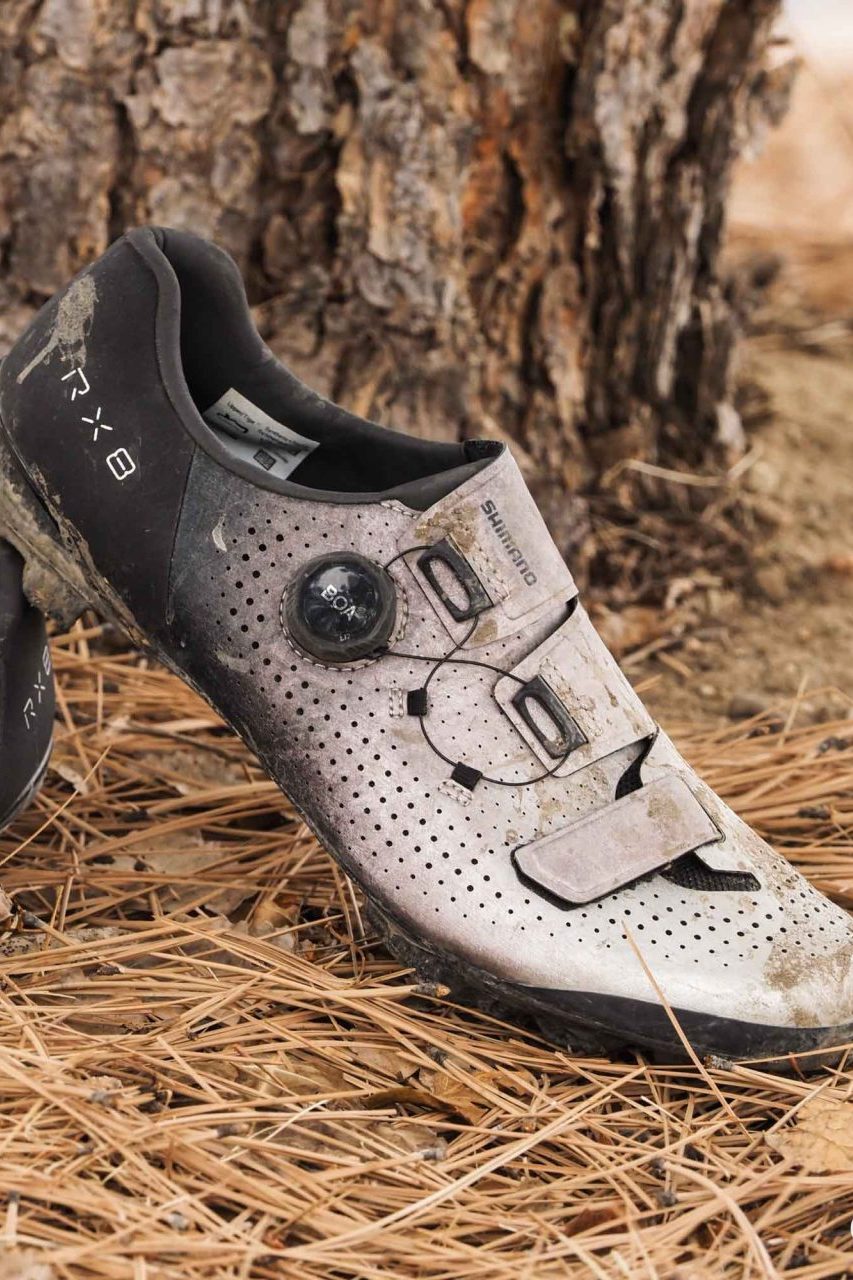Shimano’s flagship RX8 gravel shoes epitomize the genre with a road-like fit, a very stiff plate, and a sleek appearance paired with a minimal tread design that offers just enough security for the occasional scramble.
In short, they absolutely nail their narrowly defined target market – and could even serve as a good option for roadies who prefer two-bolt pedal systems. But I’m still left wondering if a bit more versatility is in order.
Gravel everything
Gravel is such a thing these days there are now all sorts of “gravel-specific” soft goods to go along with those gravel bikes. Helmets? Yep. Clothing? Don’t you know it. Sunglasses?? But of course.
Occupying an intersecting area in the Venn diagram of hard and soft goods, shoes have naturally gotten the gravel-specific treatment as well, aiming to combine the secure fit, low weight, and streamlined aesthetic of road shoes with two-bolt cleat compatibility and a minimal tread design that offers far more traction and security when on foot than any road-specific shoe.
To that end, Shimano’s RX8 gravel model is an interesting hybrid that borrows elements from across the company’s broad selection of road and off-road footwear.
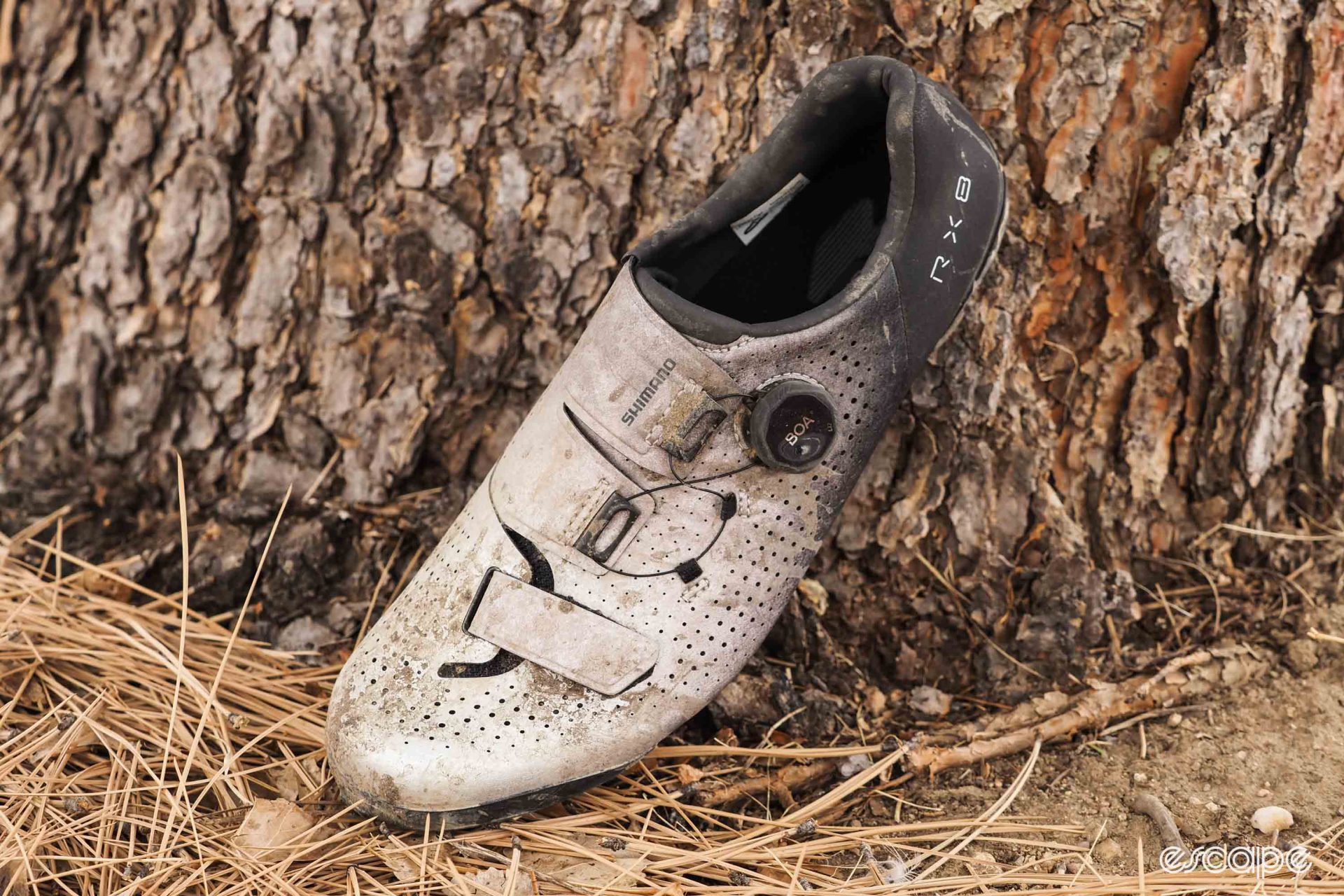
Despite its flagship status, the upper is in many ways a close cousin of Shimano’s mid-range RC5 road shoe, what with its wraparound layout and single Boa closure system that criss-crosses over the middle third of the shoe. Also like the RC5, the front of the shoe is adjusted via a conventional hook-and-loop strap. Shimano uses slightly nicer materials here and more perforations as compared to the RC5, though, as well as Boa’s premium Li2 dual micro-adjustable dial instead of the more basic L6 closure. The dial itself is also relocated further down on the side of the RX8 as compared to the more top-mounted location on the RC5.
While there are more similarities than differences in terms of the overall configuration of the RX8 as compared to the RC5, Shimano does infuse a more aggressive fit into its gravel model. The heel cup is substantially narrower and the midfoot area is noticeably lower-volume, both of which are intended to promote a more secure hold for more efficient pedaling. The overall width of the toe box area is still fairly generous – as with all current-generation Shimano shoes with the latest Dynalast shaping – although there’s still a more traditional taper up front.
The base of the shoe is where things get really interesting.
Shimano outfits the RX8 with a proper long-fiber carbon composite plate to mimic the rigidity of high-end road shoes, with a 10/12 score on the company’s self-assessed stiffness scale. As with all of Shimano’s Dynalast-themed shoes, there’s minimal toespring (how much the front of the plate curves upward under your toes; aka rocker) and just a hint of arch support built into the plate itself; the rest comes courtesy of swappable foam inserts on the insoles.
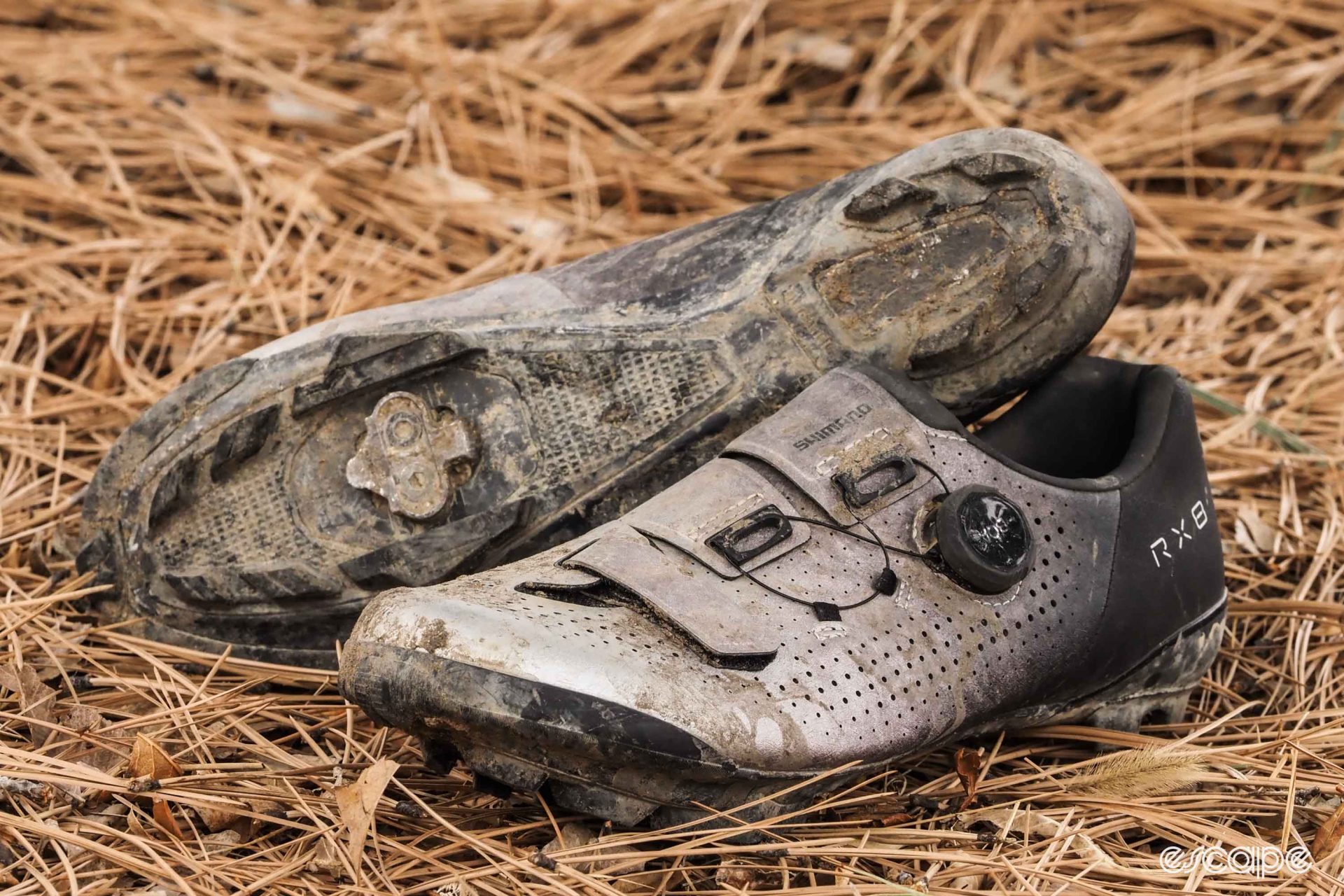
What makes the RX8 “gravel-specific” more than any other feature is the minimal tread. There’s rubber covering the key areas of the carbon plate, but the middle is wholly exposed, and the tread itself consists of just a quartet of surprisingly pointy studs at the heel along with six bigger blocks around the cleat pocket. It’s more than you’d find on a road shoe, of course, but nothing like what you’d see in a typical XC MTB one.
One obvious upside to that pared-down design is reduced weight – after all, rubber is heavy. Actual weight for my size 43 test pair is 533 g, without cleats. Shimano offers the RX8 in standard sizes from 40-48 with half sizes from 41-45. There are also “wide” offerings in 40-46, and four color options throughout (including a couple of bolder hues with printed graphics). Retail price is US$275 / AU$390 / £230 / €230.
Great shoes, but still a compromise
On the whole, Shimano’s done a very good job with the RX8, and they certainly fulfill their intended purpose.
As promised, the fit is indeed very road-like, and anyone who already owns a pair of Shimano’s Dynalast road shoes should quite literally feel right at home here. Overall hold is excellent, with a snug grip around the heel and midfoot areas and nary a hint of lift out back when either pedaling or walking. The various cutouts and the leather-like lining keep that tightness from ever feeling confining – even after three or four hours in the saddle – and despite the single Boa closure, the shoe’s well-designed shape and the way the upper is split into thirds does a good job of accommodating various instep heights with a pleasantly even feel throughout.
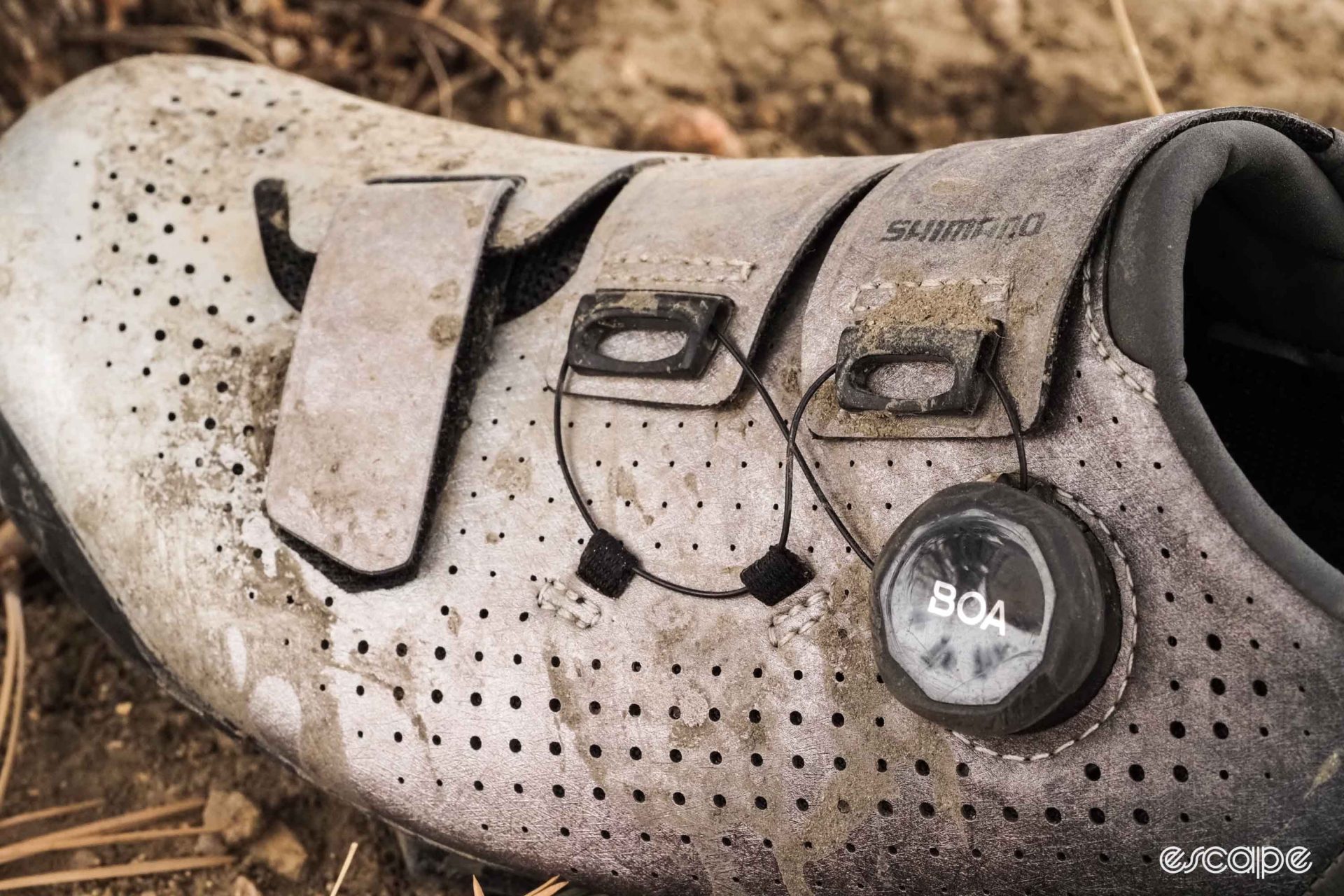
Three-bolt road pedal systems are typically favored over two-bolt ones for their more solid-feeling connection to the shoe, but the quality of the interface on the RX8 challenged that notion. The narrow block spacing and rather dense materials do a superb job of keeping the shoe from rocking on the pedal, and the stiff plate keeps hot spots at bay.
“The secure and toggle-free connection to a Shimano SPD pedal rivals that of a Specialized S-Works Recon shoe,” said fellow Escape Collective tech editor Dave Rome.
Arch support was surprisingly good, too. I typically gravitate toward shoes with more built-in support in the sole plate, but the modest amount of shaping here seemed to be a decent compromise. I was able to keep my flat feet from rolling inward while pedaling by using the “high” footbed insert, but I suspect riders with taller arches might need to resort to an aftermarket solution to keep them from collapsing under load. As always with shoes, though, YMMV.
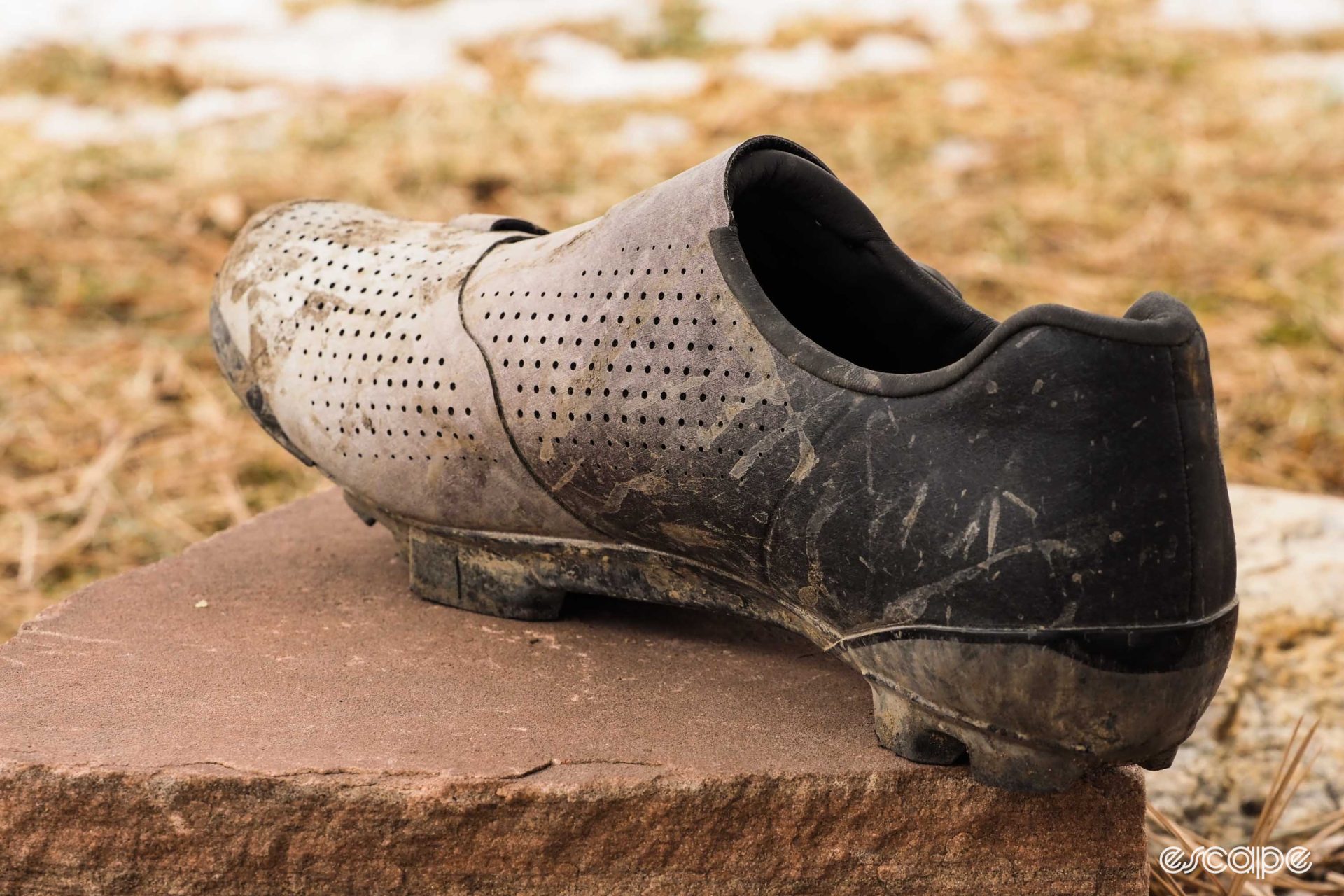
Rome and I both tested the standard-width version of the RX8, and we each found this latest generation of Shimano’s premier gravel shoe to be slightly more accommodating in the toe box in terms of overall width. However, we also both felt the toe box was a little too aggressively tapered. In other words, there was more space for your metatarsals than in previous editions of Shimano gravel shoes, but your toes – the pinky toes, in particular – still end up being squished inward a bit. I never found it overly constrictive, but if you’re drawn to cycling shoes with more squared-off profiles, you’d be better off looking elsewhere. And yep, Shimano does offer the RX8 in a “wide” last. I didn’t try those, but even if the toe box is slightly wider, the taper appears to be just as aggressive.
Those generous perforations are also quite effective at keeping your feet reasonably cool. While I wouldn’t describe the RX8s as particularly airy, I also never felt like my feet were uncomfortably hot during intense midday summer sun while heading up steep and exposed climbs. And although I never got the chance to check out how well they perform in the wet, others have reported that the RX8s dry quickly after getting drenched.
After months of testing, the uppers even still look great. The material itself is impressively resistant to scuffing, and wraparound guards at the toe and heel provide plenty of coverage.

It’s when on foot that I find the RX8s more disappointing.
That pared-down tread may help save weight, but it also compromises the shoe’s stability when you’re off the bike. The forefoot blocks are wide enough for excellent pedal support, but not much wider, and they certainly don’t make full use of the available real estate on the carbon plate; you’ll want to be especially mindful of your footing on uneven terrain to prevent rolling an ankle. That narrow spacing extends to the tread further forward underneath the toes, too – there’s almost nothing right at the forward edge to dig into softer ground – and although the denser materials are great in terms of the pedaling interface, they can feel a little slippery when walking on harder surfaces.
Long-term durability is also an issue as a result. Since there’s so little material actually contacting the ground at any given moment, the rubber that is in contact will wear faster than it would otherwise even with its harder durometer. In other words, while you can walk reasonably comfortably in the RX8, you still don’t really want to.
“I’d hoped they’d at least update some of the lugs on the sole as I’ve found the limits of the provided grip before in a comedic (and painful) fashion,” Dave recounted. “Likewise, for such a hard and traction-limited material, you’d hope it were at least more durable than it is.”
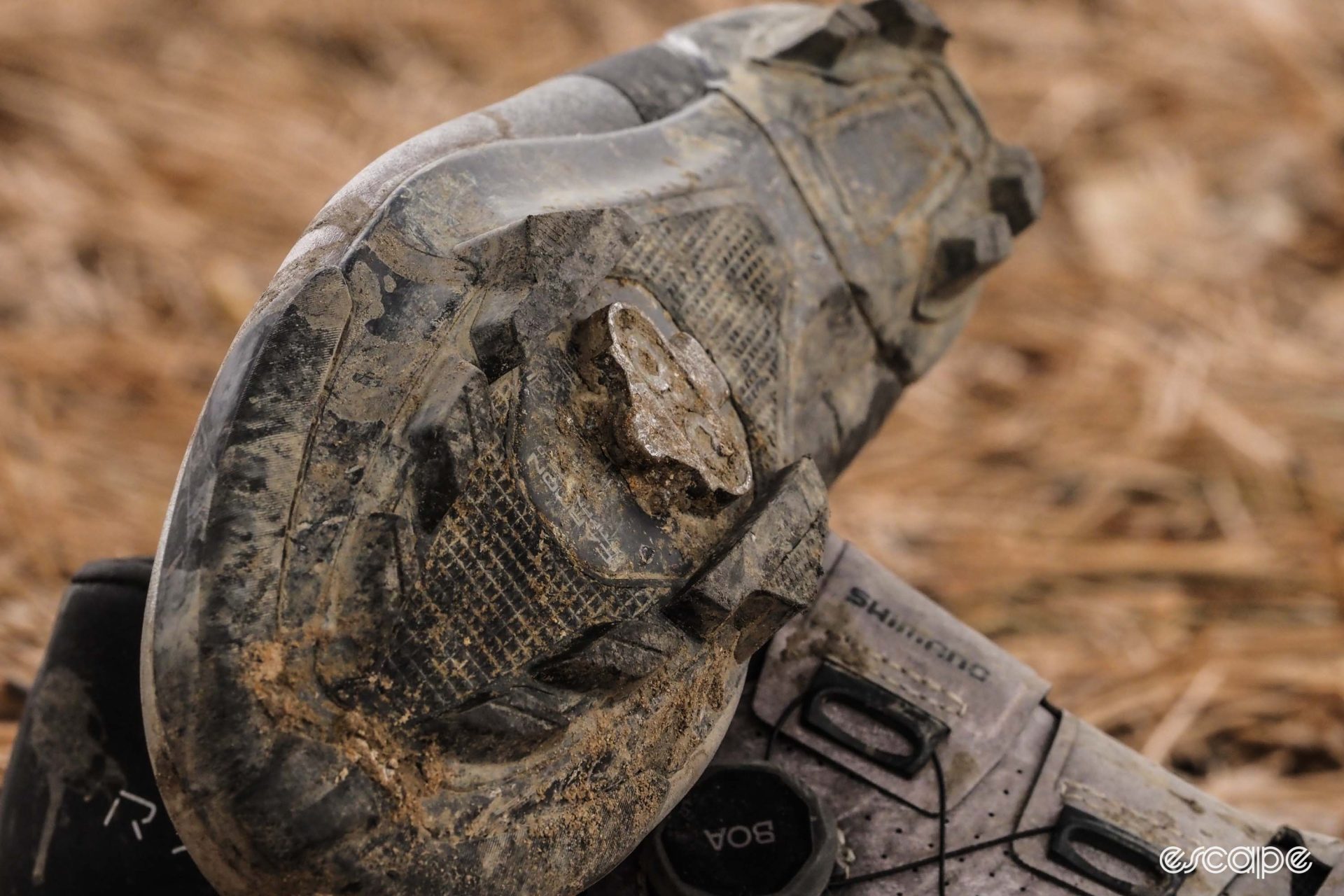
Comparison shopping
Gravel shoes are an interesting lot in general, and as the RX8 capably demonstrates, they’re an exercise in compromise. But what else should you consider?
Dave also took a look at the RX6, the next model down on Shimano’s gravel shoe ladder.
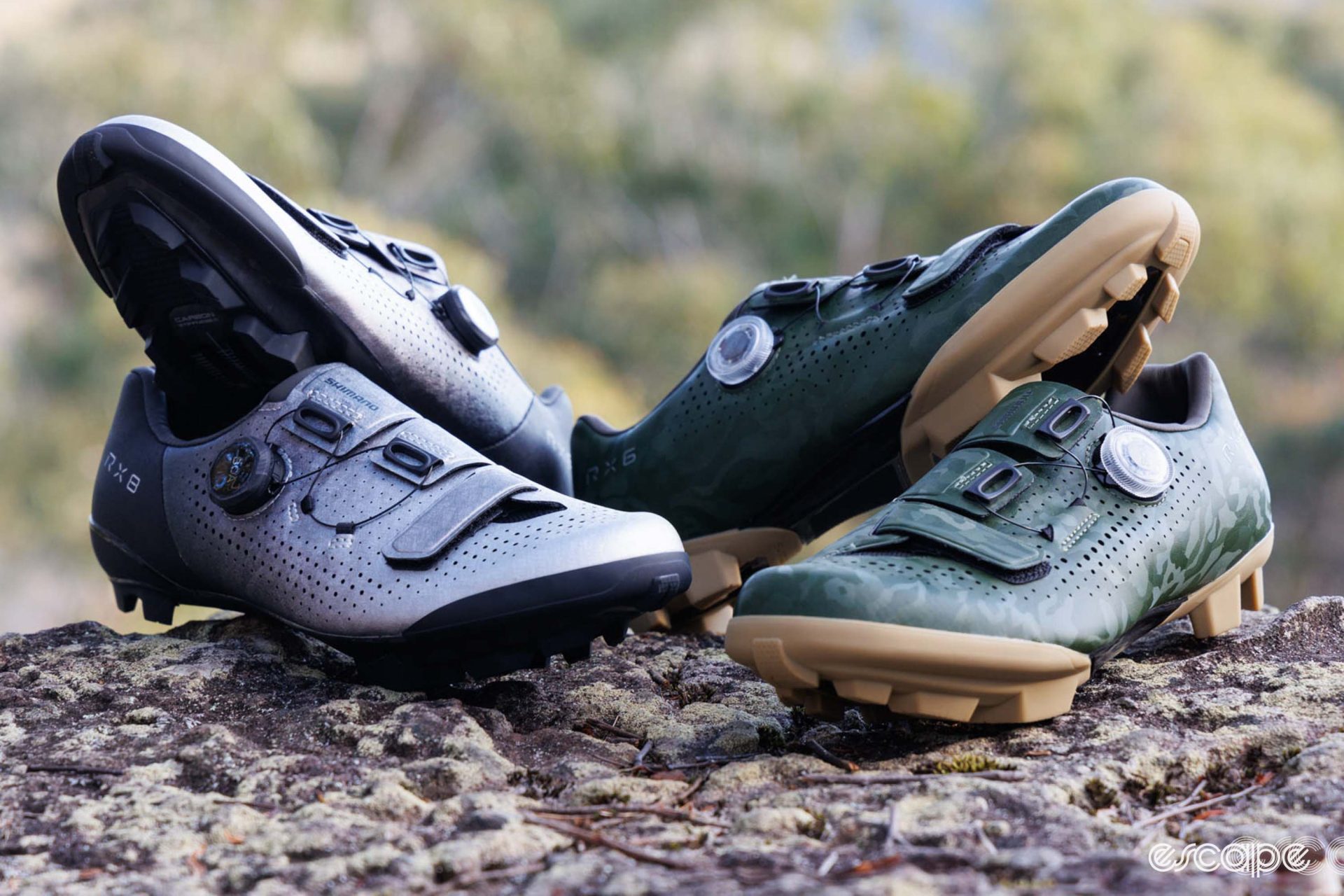
“On paper, the RX6 is a similarly weighted (588 g; EU43), comparably treaded, and single-Boa-equipped gravel shoe,” Dave said. “On foot, both shoes fit similarly, with a snug, if-not-narrow fit around the forefoot and toward the toes. Here, the RX6s are subtly more generous in toe wiggle room, while out back, the heel counter is less shapely and isn’t as controlling toward heel lift.
“Clipped in, the RX6’s carbon-reinforced nylon plastic sole is floppier underfoot when compared to the carbon fibre sole of the RX8. Sometimes a less-stiff sole can offer greater comfort, and it’s certainly easier to walk in, but I found myself distracted under higher-power efforts. Notably, while the shoe isn’t all that flexy along its length, the high amounts of torsional flex had me feeling my heels pull out of the plane to the balls of my feet. As cycling shoe specialist Sam Richardson previously told Escape Collective, that flex may work for riders with strong feet, but could cause issues for others.
“Overall the RX6 isn’t a bad shoe, but it sits in a weird middle ground where it has the fit and limited walking grip of a race shoe, but lacks the stiffness to be considered as much,” Dave added. “If you want a performance shoe then I’d suggest the RX8 is worth the extra expense.”
The other option, though? A more conventional XC MTB shoe – specifically, Shimano’s XC7.
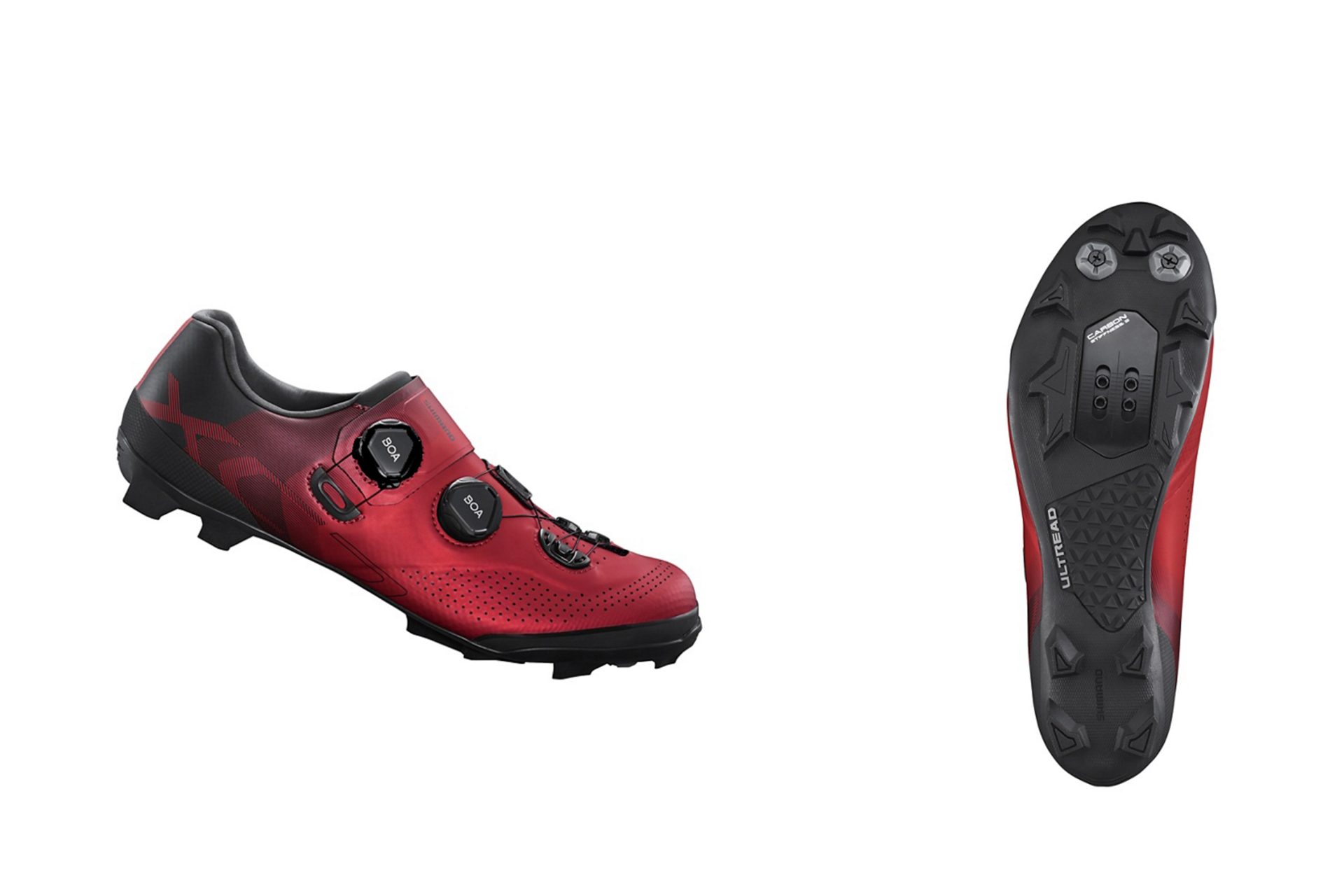
Granted, I haven’t actually ridden the XC7 myself, but according to Shimano, the fit between the XC7 and the RX8 is nearly identical, and although Shimano rates the XC7’s composite plate slightly more flexible, I doubt many everyday riders would notice. Perhaps more critically, the upper features a dual Boa setup that should be more tunable on the fly, and the tread design is far more aggressive without being over the top for more stability while on foot.
All that extra rubber translates into a hit on the scale, of course, to the tune of about 100 g per pair – hardly nothing if you’re keen on shaving grams. But unless you’re really trying to optimize things very specifically for gravel – or spending extremely little time on foot – the XC7’s combination of additional versatility, a more adjustable fit, and even its slightly lower price than the RX8 means that’s probably the way I’d go myself.
More information can be found at bike.shimano.com.
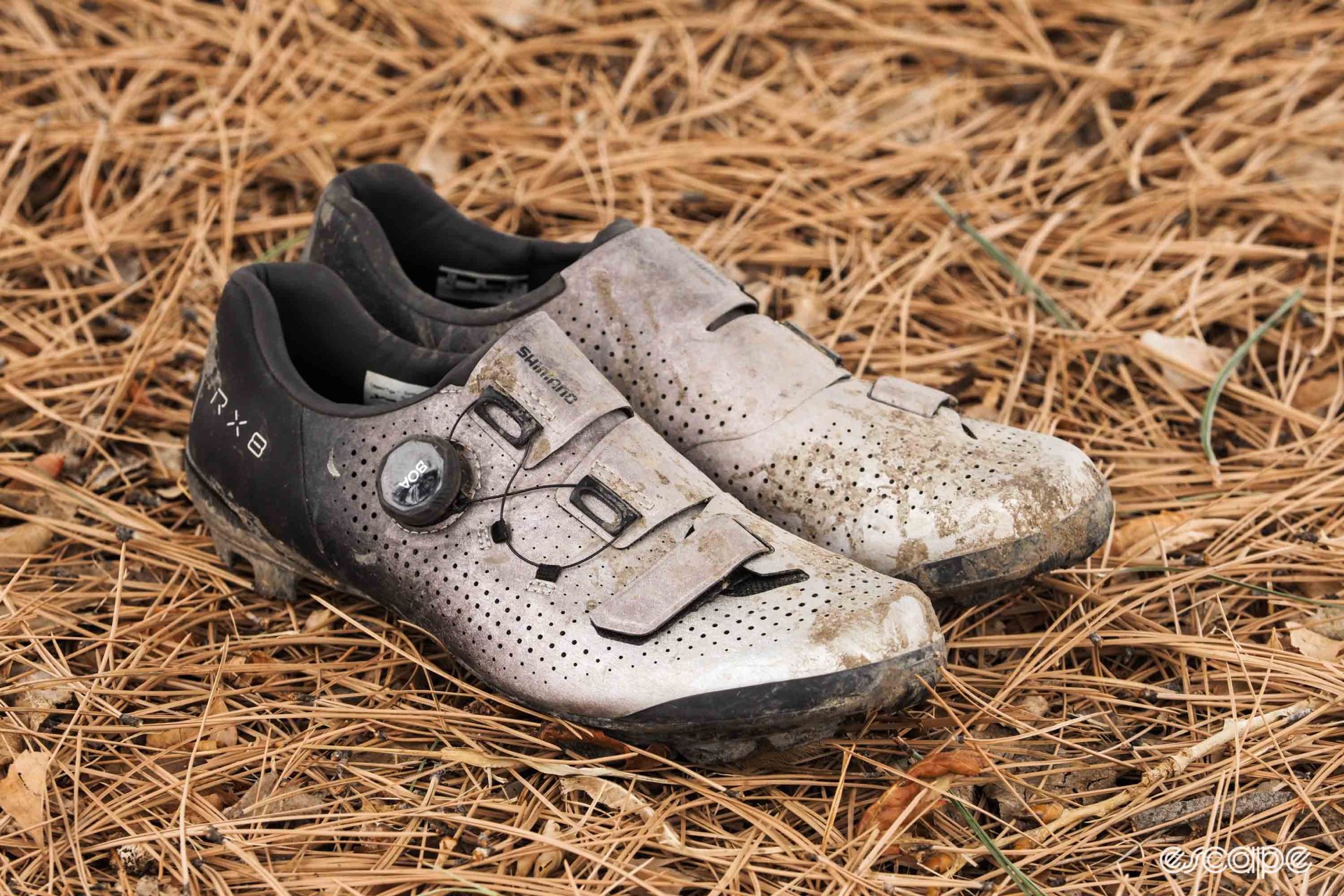

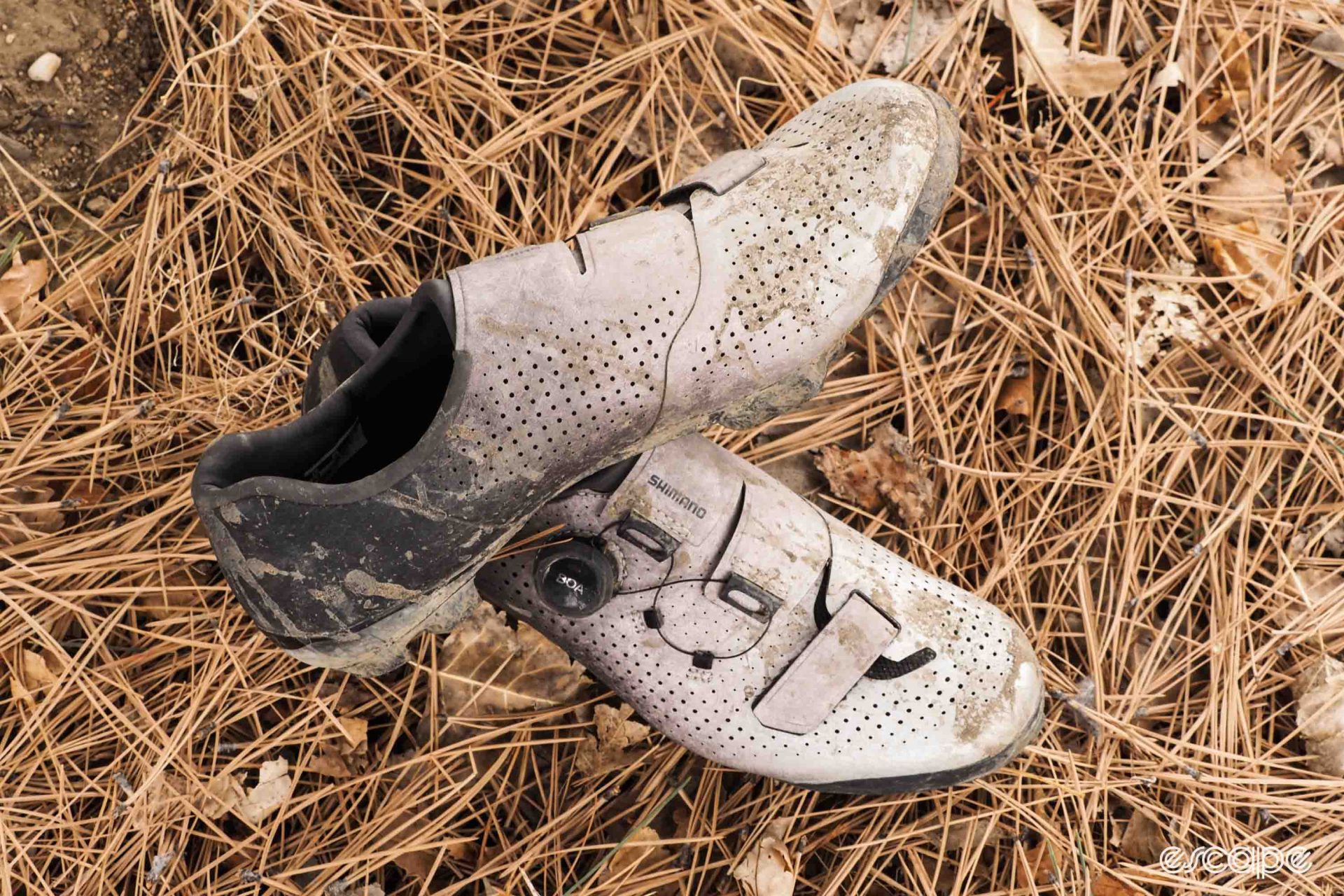
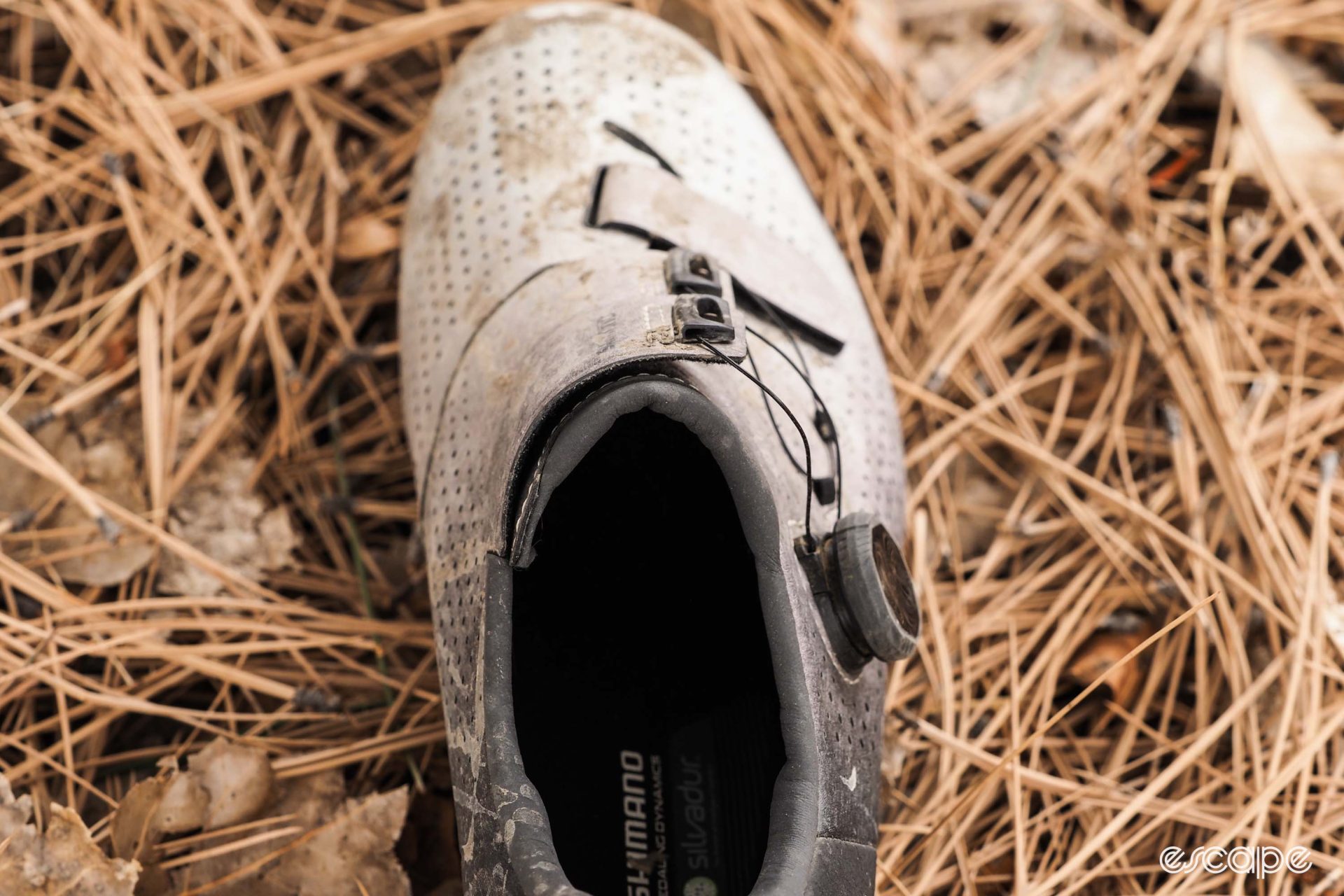

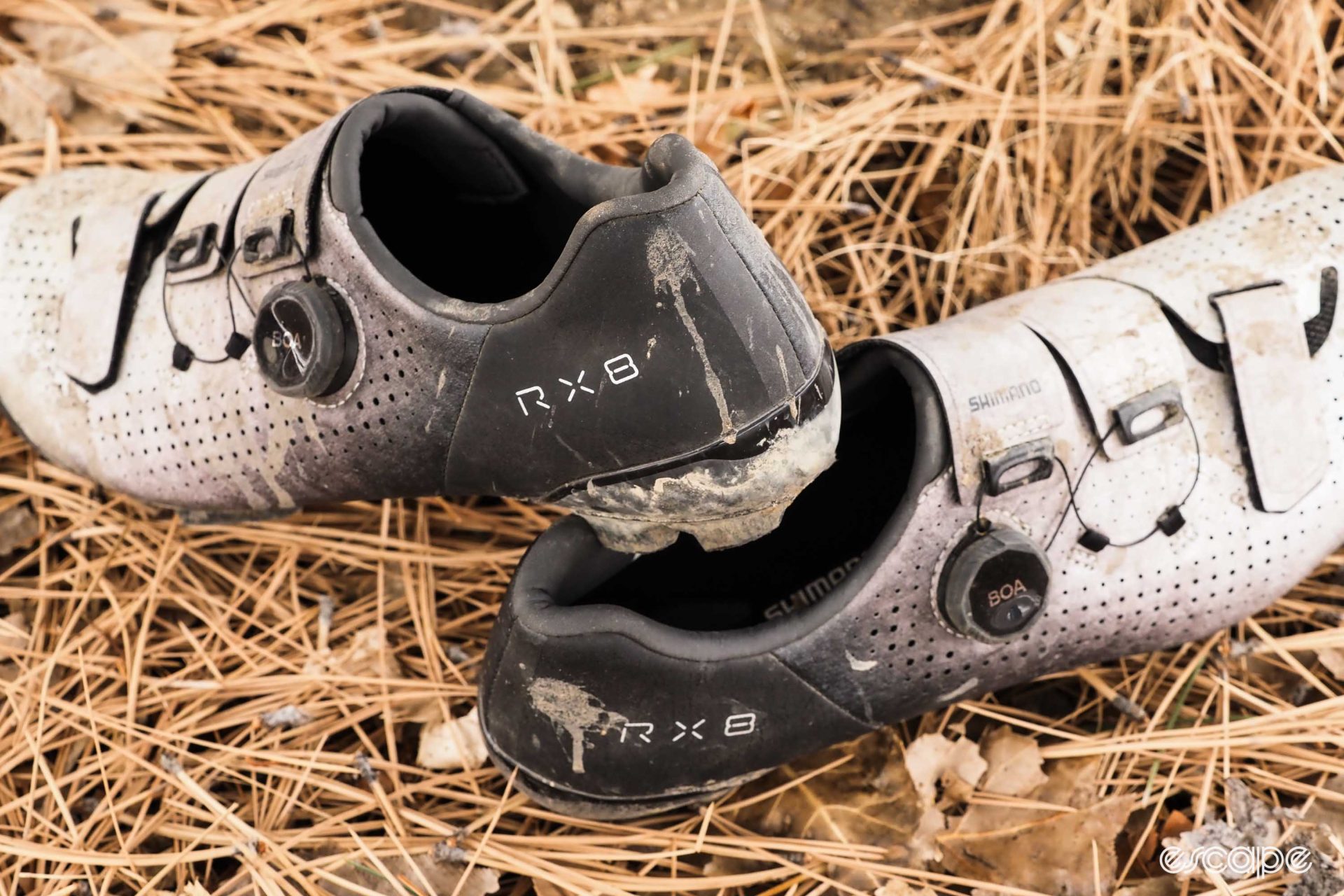
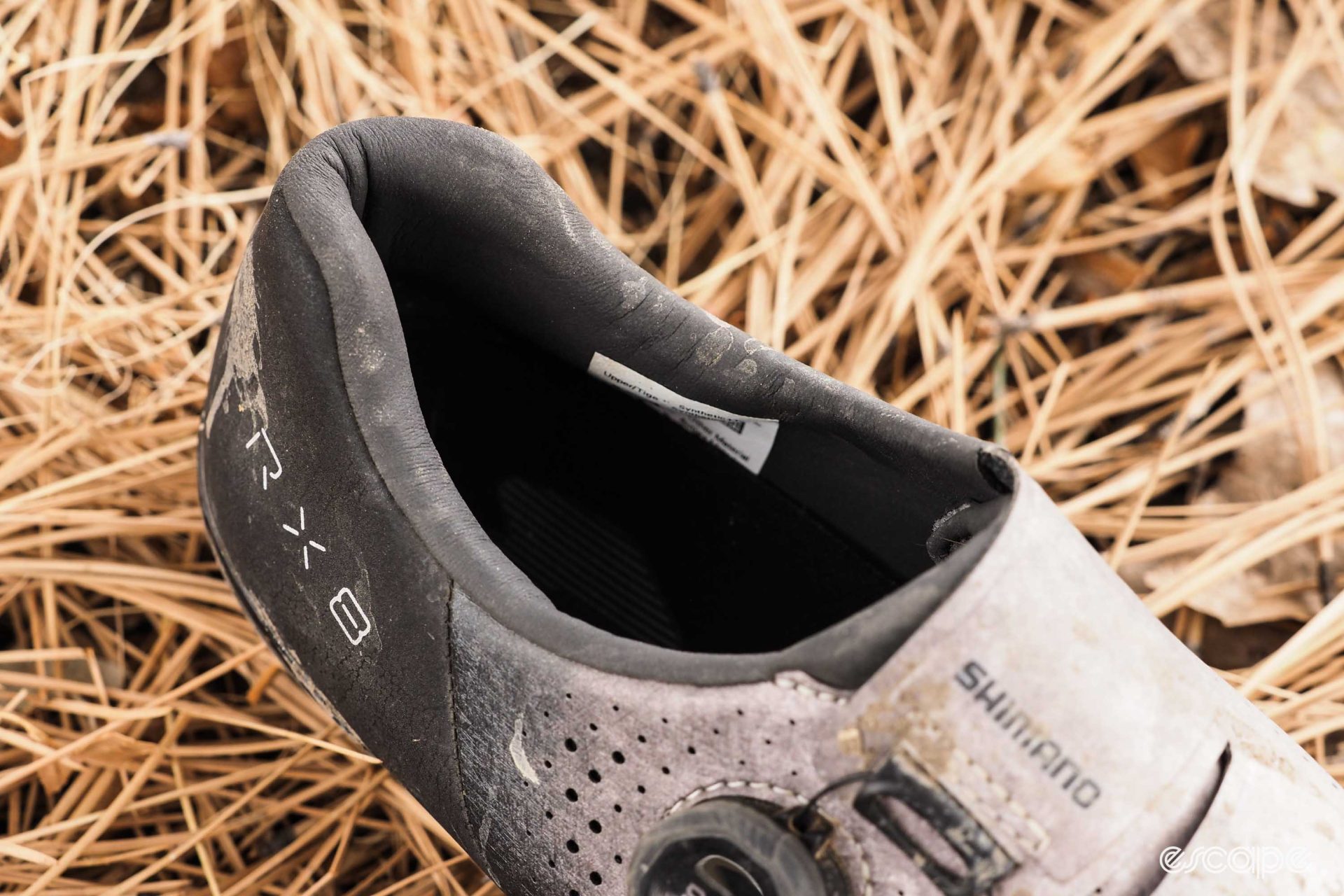
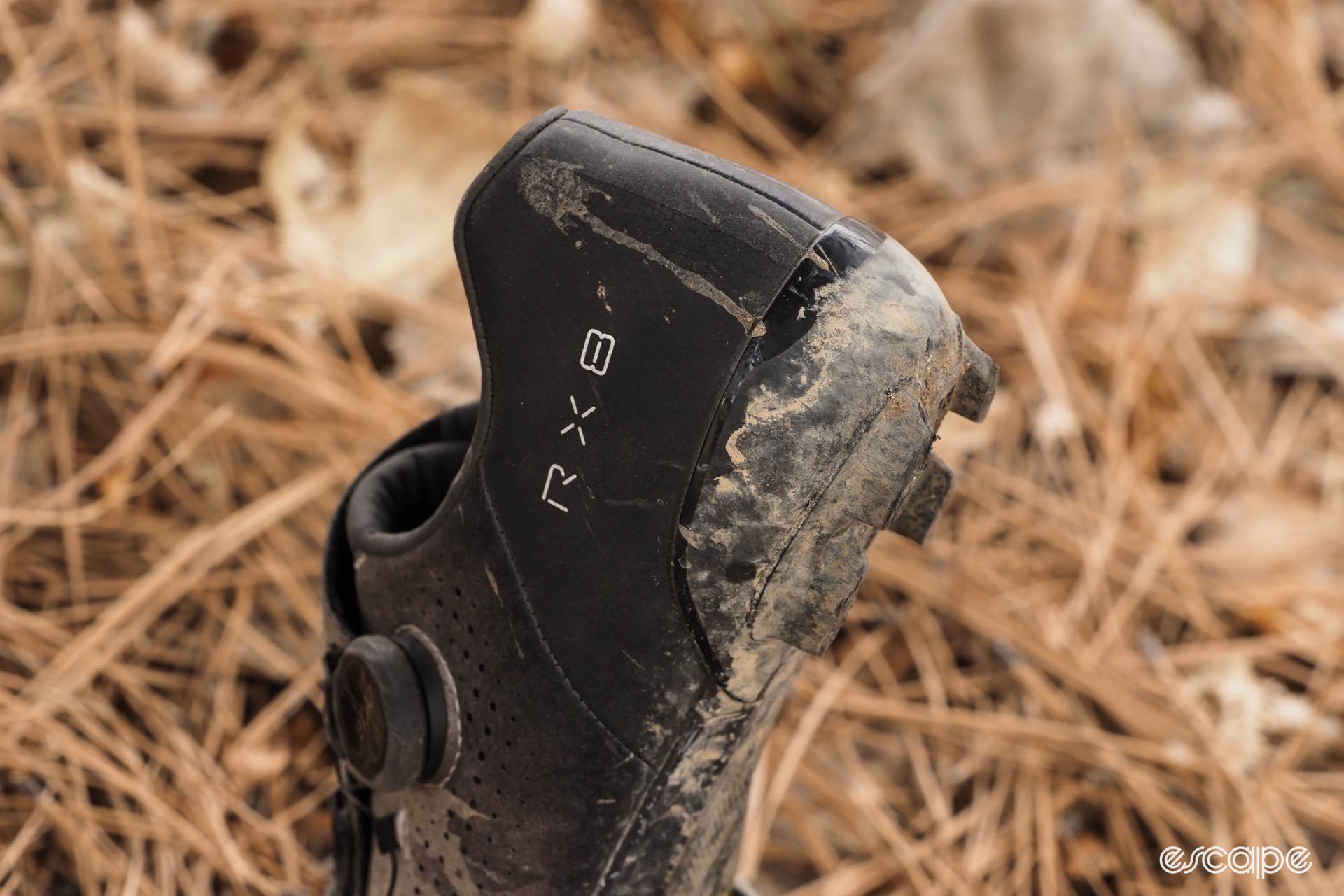

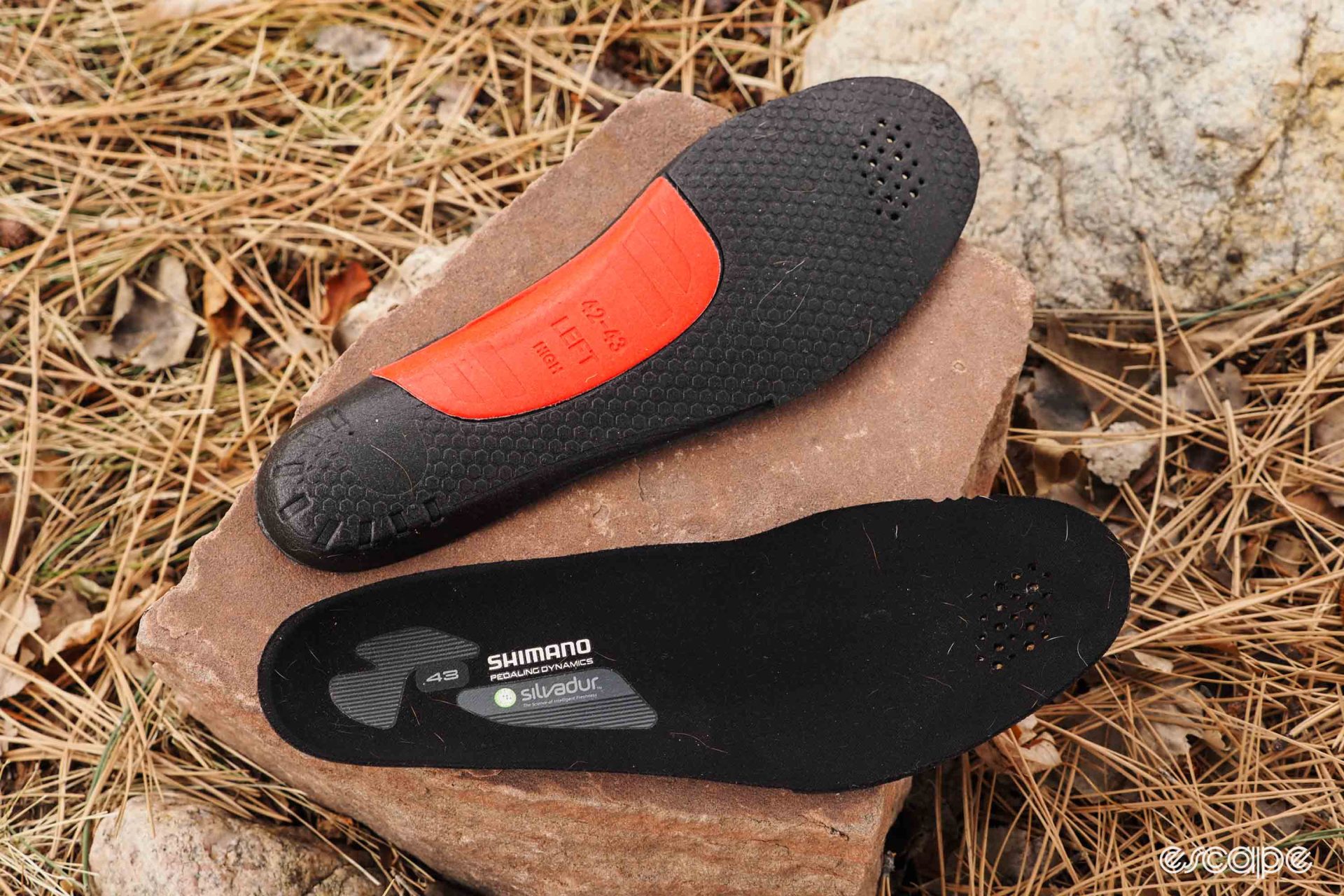
Did we do a good job with this story?

